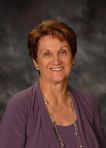Jo Ann A. Mathews's Blog, page 11
August 25, 2021
Women and Adversity: Tye Leung Schulze, First Chinese American to Vote
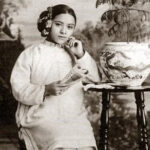

Tye Leung Schulze (U.S. National Park Service)
Women and Adversity:Tye Leung SchulzeFirst Chinese American Woman to VoteTye Leung was born August 24, 1887 in San Francisco’s Chinatown, the youngest of eight children of Chinese immigrants. Her parents had arranged a marriage between Tye’s sister and an older man in Montana, but her sister ran away with her boyfriend, so her parents decided to have Tye marry the man. To escape this fate, Tye, who was between twelve and fourteen years old, took refuge in the Presbyterian Mission Home.
At the Mission, Donaldina Cameron, who helped Chinese immigrant women escape prostitution and servitude, accepted Tye and nurtured the teen. Tye learned English, studied Christianity, and became an interpreter at the Mission. Cameron recommended Tye take the civil service examination, and she became the first Chinese American to pass the test and become a federal employee.
In 1910 Leung worked at the Angel Island Immigration Station in San Francisco as a matron and translator in the women’s quarters, and Charles Schulze was an Immigration Service inspector. The couple fell in love but were not allowed to legally marry in California because a law from 1850 banned people who were Black, Filipino, or Asian from marrying White people.
In 1912 Leung earned another first. She made headlines for being the first Chinese American woman to vote in a primary election. The California legislature passed a law in 1911 allowing women the right to vote. When a reporter asked about the experience, Leung said:
My first vote?—Oh, yes I thought long over that. I studied; I read about all your men
who wish to be president. I learned about the new laws. I wanted to KNOW what was
right, not to act blindly. I think the American ladies are like that too. For everywhere I
heard talk about the election and the candidates. I think we should learn, not vote blindly,
since we have been given this right to say which man we think is the greatest.
Her determination was legendary. Despite not being allowed by law to marry Schulze in California, the couple traveled to Vancouver, Washington where interracial marriage was legal. They married in October 1913. California did not repeal its law against interracial marriage until 1948.
When the couple returned to San Francisco, they understood that because of discrimination they’d be forced out of their jobs. Charles took a job at the Southern Pacific Railway Company and later at the Columbia Gramaphone Company. Tye was bookkeeper at the San Francisco Chinese Hospital, and in 1926 took a job working the night shift as a telephone operator at the Chinatown telephone exchange where she stayed for twenty years. Her invaluable talent lay in being a translator for Chinese immigrants and residents of Chinatown in San Francisco.
The Schulzes had four children: Frederick, Theodore, Louise, and Donaldina. When Charles died in 1935, Tye continued her job at the telephone company and as an interpreter. She increased her efforts to advocate for Chinese immigrants and remained active in the Chinese American community throughout her life.
When the War Brides Act of 1945 passed, Tye was again called on to be an interpreter at the Immigration Office.The introduction of pinball machines in California in the 1930s attracted Tye’s attention, and she became known in Chinatown as a “pinball wizard.”At the age of sixty-one, she was arrested for allegedly driving women to abortion clinics. In December 1948, after an investigation, the charges were dropped.Tye Schulze died in San Francisco March 10, 1972, at the age of eighty-four.
More information:
www.youtube.com/watch?v=viCq9LfKVwU
www.immigrant-voices.aiisf.org/stories-by-author/807-interpreter-voter-and-pinball-aficionado
www.nps.gov/people/tye-leung-schulze.htm
The post Women and Adversity: Tye Leung Schulze, First Chinese American to Vote appeared first on Jo Ann Mathews.
August 11, 2021
Women and Adversity: Isabella Beecher Hooker

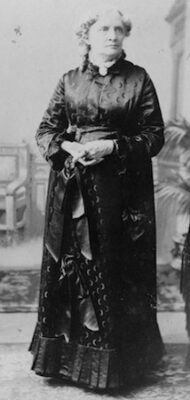
Isabella Beecher Hooker (Library of Congress, Sewall Collection)
Women and Adversity: Isabella Beecher HookerAdvocate, Suffrage and Women’s RightsIsabella Beecher was considered frivolous by her family, and one reason was that she spent a lot of time checking her appearance. She wasn’t interested in marriage, but John Hooker, a lawyer and abolitionist and a descendent of Thomas Hooker, who founded Hartford, CT, pursued her. Isabella finally accepted his proposal, and the couple married August 5, 1841 when Isabella was 19.
After the marriage she would go to his law office, and they would read from Sir William Blackstone’s Commentaries on the Laws of England. Isabella was incensed when she read one commentary that defined a married woman and man as one person under the law. It read in part, “…the very being or legal existence of the woman is suspended during the marriage, or at least is incorporated and consolidated into that of the husband…” From then on, Isabella worked for enfranchisement of women. She was outspoken and pressed for women’s rights and suffrage.
Isabella became acquainted with suffragists Elizabeth Cady Stanton and Susan B. Anthony and joined the National Woman’s Suffrage Association. In 1869 she helped found the Connecticut Woman Suffrage Association and was its director until 1905. In 1871 she organized the NWSA convention that drew up a constitutional amendment on suffrage and presented it to Congress. She lobbied and testified in Washington, D.C., on behalf of the amendment.
John assisted Isabella in drafting a bill for the Connecticut legislature giving married women the same property rights as their husbands. She introduced the bill to lawmakers for seven years before it passed in 1877.
Isabella was born February 22, 1822, in Litchfield, Connecticut. Her father was the renowned Congregationalist preacher Lyman Beecher. After his first wife died, leaving eight children, he married Harriet Porter, Isabella’s mother. Isabella’s half-sister, Harriet Beecher Stowe, was an avowed abolitionist and gained fame with her writings, primarily Uncle Tom’s Cabin.
Isabella suffered a stroke and died about two weeks afterward on January 25, 1907, just short of her eighty-fifth birthday. John had died in 1901. The couple had four children. Their first son, Thomas, died as an infant, but Mary, Alice, and Edward survived.
More information:
connecticuthistory.org/looking-back-tempest-tossed-the-story-of-isabella-beecher-hooker
awpc.cattcenter.iastate.edu/directory/isabella-b-hooker
The post Women and Adversity: Isabella Beecher Hooker appeared first on Jo Ann Mathews.
July 21, 2021
Women and Adversity: Hazel M. Johnson Mother of Environmental Justice Founder of People for Community Recovery
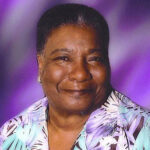
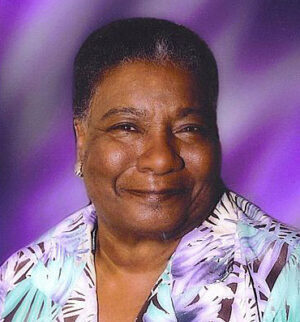
Hazel M. Johnson (slideplayer.com)
Women and Adversity: Hazel M. Johnson Mother of Environmental JusticeFounder of People for Community RecoveryHazel M. Johnson’s life as she knew it crashed in 1969 when her husband, John Johnson, died of lung cancer after being diagnosed a mere two weeks before. He seldom smoked, and she was bewildered that he had contracted this disease. Her seven children had various skin and respiratory ailments, and Johnson learned that many of her neighbors in the Altgeld Gardens housing project in Chicago had cancer and other physical ailments. This knowledge started her on the road to being an environmental activist.
Residents of Altgeld Gardens, which opened in 1944 for mostly Black factory workers, is situated on the far southeast side of Chicago and is managed by the Chicago Housing Authority. The area was built on a landfill and was surrounded by other landfills, industrial businesses and sewage-treatment plants, exposing the residents to hazardous gasses. The buildings where people lived were constructed with asbestos, and the drinking water was contaminated from the nearby factories. Johnson began to document the effect this environment had on the residents of Altgeld Gardens.
In 1979 Johnson heard a television report about southeast Chicago having a higher rate of cancer deaths than the city and the rest of the nation. She acted by founding People for Community Recovery. Its mission is not only to improve the living conditions of the residents of Altgeld Gardens but to address the problem of urban pollution and environmental injustice. The nonprofit agency continues today with Johnson’s daughter, Cheryl Johnson, as executive director.
Johnson nicknamed Altgeld Gardens the “toxic doughnut” and demanded the housing authority rectify the situation. One study said the area contained more than 500 sources of potentially hazardous pollution with the 31 landfills and 22 factories emitting chemical and metallic elements into the air. A 1987 study showed that 60 percent of Blacks and Latinos lived in communities with uncontrolled toxic-waste sites.
Johnson became relentless in teaching the community about the environment and demanding results from the CHA and Waste Management, Inc. As she became a popular speaker on the subject, the media and some politicians began to listen. At last CHA removed the asbestos, and the Maryland Manor neighborhood got water and sewer lines installed. In 1992 Johnson received the President’s Environment and Conservation Challenge Award.
Johnson was born in New Orleans, Louisiana, the only one of four siblings to live past nine months of age. By the time she was 12, both parents had died, so she went to live with an aunt in Los Angeles. Five years later, after she had attended high school, she came back to New Orleans and within a year met John Johnson. They moved to Chicago where community organizers convinced her to join a campaign against housing segregation. She held several jobs in Chicago, including working for the U.S. Postal Service.
In February 2020 U.S. Representative Bobby Rush of Illinois, introduced legislation to observe April each year as Hazel M. Johnson Environmental Justice Month. He had introduced legislation in December 2019 to direct the Postmaster General to issue a commemorative stamp in Johnson’s honor.
Hazel Johnson died January 12, 2011, of heart failure at the age of 75. She was survived by her children Yolanda, Valerie, John, Jr., Johnny, and Mark. She was preceded in death by son Michael.
I include Hazel Johnson in my ebook Women and Adversity, Recognizing 23 Notable Mothers, which is available at amazon.com and barnesandnoble.com.
More Information:
grist.org/equity/hazel-johnson-enviro...
goodblacknews.org/2021/02/20/bhm-good...
www.chipublib.org/blogs/post/hazel-m-johnson-mother-of-the-environmental-justice-movement
www.peopleforcommunityrecovery.org
The post Women and Adversity: Hazel M. Johnson Mother of Environmental Justice Founder of People for Community Recovery appeared first on Jo Ann Mathews.
July 7, 2021
Women and Adversity: Chief Theresa Kachindamoto, Advocate for Young Women in Malawi

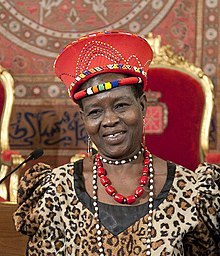
Chief Theresa Kachindamoto (wikipedia.org)
Women and Adversity: Chief Theresa Kachindamoto Advocate for Young Women in Malawi“When girls are educated, everything is possible,” says Chief Theresa Kachindamoto, tribal ruler over the 900,000 people in Dedza District in the African country of Malawi.
Chief Kachindamoto is depicted as friendly yet fearsome. A mother of five sons, she advocates for girls. When she was named Chief in 2003, she came back to Mtakataka where she was born and was horrified to see twelve-year-old girls with babies. The rural custom, poverty and lack of education are among the reasons girls marry as teens. “If they are educated, they can be and have whatever they want,” she says.
Known as “The Terminator,” Kachindamoto as chief has the authority to annul marriages and is recognized throughout the world as ending child marriages. Reports indicate she has ended at least 1,000 child marriages, but possibly as many as 4,000. After she annuls the marriage, she sends the girls and boys back to school. She also banned cleansing rituals, a form of sexual abuse in which a girl is forced to have sex with a man when she reaches puberty.
Kachindamoto dismissed male subchiefs who continued allowing cleansing and child marriage. With her strict enforcement of annulments, it took until 2015 for the Malawi Parliament to pass the Marriage, Divorce and Family Relations Law, which increased minimum age of marriage from 15 to 18. However, a loophole allowed child marriages when the youths had parental consent. An amendment to the law in 2017 closed the loophole. Kachindamoto is now working on having the minimum age raised to 21.
Kachindamoto was born in 1959 and is the youngest of 12. She credits her father, who was the area’s senior chief, with insisting she complete her education. She got a job as secretary at a city college in Zomba and worked there for 27 years. She saw how education helped women choose a career and support themselves.
She was not interested in being chief of the Dedza District, but a group of her tribal royal family visited her to say she was chosen to replace her brother, who had died. She is quoted as saying, “They said they picked me because I was the most educated and successful, and I’m good with people.” She believed it was her duty to accept the role as chief.
No official birthday or information about her husband and children was readily available.
You can read about Chief Kachindamoto in my ebook, Women and Adversity, Recognizing 23 Notable Mothers, available at amazon.com and barnesandnoble.com.
More information:
cpnn-world.org/new/?p=22728
inews.co.uk/news/world/malawi-tribal-chief-child-brides-underage-marriage-death-threats-education-497260
The post Women and Adversity: Chief Theresa Kachindamoto, Advocate for Young Women in Malawi appeared first on Jo Ann Mathews.
June 23, 2021
Women and Adversity: Irena Sendler Mother of the Children of the Holocaust

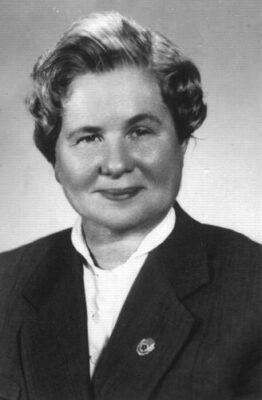
Irena Sendler, Mother of the Children of the Holocaust (Pinterest)
Women and Adversity: Irena SendlerMother of the Children of the HolocaustIrena Sendler’s father told her when he was dying, “If you see someone drowning, you must try to rescue them, even if you cannot swim.” His daughter heeded his words and is credited with saving 2,500 Jewish children.
Irena Krzyżanowski was born February 15, 1910, the only child of Dr. Stanislaw and Janina Krzyżanowski. Her father was a Catholic physician who ministered to the sick no matter what religion or background. The family lived in Otwock, Poland, near Warsaw, and he was the only doctor in Otwock who would treat the poor, mostly Jewish, with typhus. In 1917 he died of the disease.
After his death, Jewish leaders helped pay for Irena’s education. She studied Polish literature at Warsaw University but was suspended for three years because she opposed the ghetto-bench system, which segregated Jewish students. Those opposing this system stood instead of being seated.
In 1931 Irena married Miecsyslaw Sendler, and the couple moved to Warsaw. When the Germans invaded Warsaw in 1939, Irena began giving food and shelter to Jews. She doubled her efforts in 1940 when the Warsaw Ghetto was erected. The Ghetto was an area the size of Central Park in New York City where 450,000 Jewish people were enclosed. These people were sent to concentrations camps or died because of the unlivable conditions in the Ghetto, so she worked harder to save them.
As a social worker, Sendler had papers to enter the Warsaw Ghetto, and she began creating false documents to help people escape. She joined the Żegota, a Polish underground group that helped save Jewish people. She was put in charge of the Children’s Division, and the group used several means to help children escape. They hid a child under a stretcher in an ambulance, used sewer pipes and underground passages or carried a child hiding in a sack or suitcase.
Sendler and her network helped place children in homes. The people hiding the children knew they had to return them to Jewish relatives after the war. Sendler kept a list of the names of all the children she saved, hoping they could be reunited with their families. However, most of the adults died at the Treblinka concentration camp.
Sendler was arrested October 20, 1943, and placed in Pawiak Prison. She was tortured when she wouldn’t reveal the names and addresses of the Żegota leaders. She received a death sentence and was believed to be shot. However, Żegota had bribed the German executioner, who helped her escape. Posters of her execution were displayed all over Warsaw, and she was able to read them herself. She remained in hiding until after the liberation of Poland in 1945.
Her marriage to Sendler dissolved in 1947. That same year she married Stefan Zgrzembski, a Jewish man she met at Warsaw University. The couple had three children: Andrzej, who died in infancy; Adam, who died of heart failure in 1999; and Janina, who lives in Warsaw. Sendler’s marriage to Zgrzembski ended in 1959.
A group of Kansas teens wrote a play in 2000, Life in a Jar, about Sendler’s mission to save children. Several biographies have been written about her, including Irena Sendler: Mother of the Children of the Holocaust by Anna Mieszkowska. The Courageous Heart of Irena Sendler was a 2009 made-for-TV movie.
Sendler died May 12, 2008, in Warsaw, at the age of ninety-eight.
You can read about Irena Sendler and other outstanding mothers in my ebook Women and Adversity, Recognizing 23 Notable Mothers.
More information:
www.thefirstnews.com/article/mum-always-said-please-dont-call-me-a-heroine-i-just-did-what-i-had-to-do-irena-sendlers-daughter-speaks-about-her-mother-10485
irenasendler.org
sprawiedliwi.org.pl/en/o-sprawiedliwych/irena-sendlerowa/biografia-ireny-sendlerowej
The post Women and Adversity: Irena Sendler Mother of the Children of the Holocaust appeared first on Jo Ann Mathews.
June 9, 2021
Women and Adversity: Hoelun, Mother of Genghis Khan
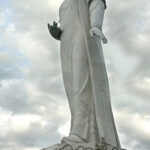
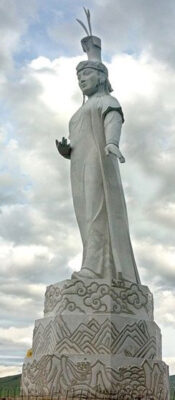
Hoelun, Stone Statue Borjin Suvraga LLC, Ulaanbaatar, Mongolia
Women and Adversity: HoelunMother of Genghis KhanMost people recognize the name Genghis Khan even if they don’t know when he lived, what he did or why he is memorable. Who, though, recognizes the name Hoelun, the mother of Genghis Khan? The few facts written about her indicate she was a powerful, determined and influential woman of her time.
It is said that Hoelun was abducted in 1159 as she and her new husband, Chiledu, were on their way back to their camp. She told Chiledu not to fight the kidnappers because he’d be killed. The Secret History of the Mongols reveals that Hoelun told her husband, “If you but live, there will be maidens for you on every front and every cart. You can find another woman to be your bride, and you can call her Hoelun in place of me.”
Some accounts say a chief named Yesügei was the kidnapper, others say kidnappers brought Hoelun to Yesügei. Whatever the story, Hoelun became Yesügei’s wife. The couple had four sons: Temüjin, who became known as Genghis Khan; Qasar; Hachiun; and Temüge; and daughter, Temülün. Yesügei took a second wife, Sochigel, who had two sons with Yesügei, Behter and Belgutei.
Yesügei was poisoned by a rival group, and Hoelun was expected to marry one of her husband’s brothers or even Sochigel’s son. However, Yesügei’s tribe turned against Hoelun and the other survivors because no one wanted to support her and her family, so they deserted Hoelun and the others. They were all expected to die, but Hoelun took charge. She searched for roots, berries, and other food for the seven children, herself, and Sochigel. As the boys got older, they hunted and fished to help the group survive.
Hoelun taught her sons unity and support for one another, yet Temüjin murdered Sochigel’s oldest son, Behter out of sibling rivalry. Sochigel and her other son, however, did not bear any ill will toward him.
Hoelun’s determination, fortitude, and diligence influenced her son Temüjin to be the great Genghis Khan. He founded the Mongol Empire in 1206, which became the largest contiguous land empire in world history, covering about 9.15 million square miles of land. It encompassed central Asia and went from the Pacific Ocean to the Danube River and the shores of the Persian Gulf.
Hoelun is said to be crucial in securing her son’s political supremacy. She demanded strict family standards, and her son held those same standards. She probably arranged his marriage, proving to be politically beneficial. She became one of her son’s most trusted advisors.
No specific date and month are available for the birth of Hoelun, but facts show she was born to the Olkhunut tribe, known for the beauty of its women, about 1142 and died about 1208.
You can read about Hoelun and other outstanding mothers in my ebook Women and Adversity, Recognizing 23 Notable Mothers.
More information
womanscape.com/2019/05/22/hoelun-the-mother-of-all-mothers
www.elizabethulanova.com/blog/influencing-the-mongol-empire-the-political-impact-of-the-mothers-of-genghis
peoplepill.com/people/hoelun
The post Women and Adversity: Hoelun, Mother of Genghis Khan appeared first on Jo Ann Mathews.
May 26, 2021
Women and Adversity: Marie Curie
 Women and Adversity: Marie Curie First Woman to Receive Nobel Prize
Women and Adversity: Marie Curie First Woman to Receive Nobel PrizeFirst Person and Only Woman to Receive a Nobel Prize Twice
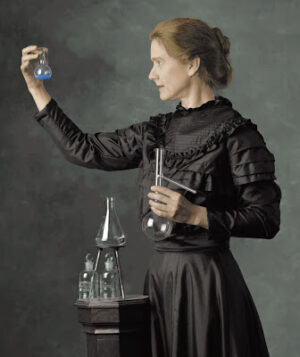
Madame Curie
I’m choosing one of the most well-known women in the world to feature for this blog, but many facts about her go unnoticed.
Marie Curie’s husband, Pierre Curie, was killed in a horse-drawn wagon accident April 19, 1906. They had married in 1895 and had two daughters. Irène was born in 1897, and daughter Ève was born in 1904. Marie refused the French government’s offer of a state pension to support her and her daughters, saying she was capable of supporting herself and her children. She went back to work the day after Pierre’s funeral, but on May 13, the Sorbonne in Paris offered her the academic post Pierre had held. She accepted, making her the first woman to teach at the Sorbonne. Her dream was to one day establish a science laboratory as a tribute to Pierre.
Born Maria Skłodowska on November 7, 1867 in Warsaw, Poland, she was the youngest of five children. Her father and mother were teachers, but her mother died when Maria was ten. Despite her high intelligence, she was denied admission to University of Warsaw because it only accepted males. Instead, she studied at the “floating university” in Warsaw that held classes in secret.
She didn’t have the funds to study abroad, so she and her older sister, Bronya, devised a plan. Maria would work while Bronya earned her degree, and Bronya would return the favor. Maria worked for five years as a tutor and governess and studied mathematics, physics, and chemistry before she was able to enroll at the Sorbonne in 1891. She earned her master’s degree in physics in 1893, and in 1894 earned a degree in mathematics.
She met Pierre Curie, a French physicist and professor in the school of physics at the Sorbonne. She became known as Marie Curie as well as Madame Curie. Her determination and use of her talents helped her reach extraordinary goals. She conducted extensive research and:
Investigated French physicist Henri Becquerel’s discovery of radioactivityCoined the term “radioactivity”With Pierre discovered the radioactive elements polonium and radiumConducted research on x-rays and uraniumDeveloped the theory of uranium rays, which created the field of atomic physicsStudied x-rays and x-ray machinesUsed radium to be the gamma ray source on x-ray machineCreated smaller x-ray machines to be used in the field during World War I, which saved livesDedicated her efforts to building the Radium Institute in Paris, which was completed in August 1914, days after the start of World War IMadame Curie received her doctor of science degree in 1903, and that same year she shared the Nobel Prize in Physics with Pierre. In 1911 she won the Nobel Prize in Chemistry, the only person to have accomplished this feat in two different sciences. That year rumors spread she was having an affair with physicist Paul Langevin, Pierre’s former student and a married man with four children. The scandal took a toll on her health.
Her daughter, Irène, won the Nobel Prize in Chemistry in 1935, sharing it with her husband, Frédéric Joliot. Her daughter, Ève, wrote the biography, Madame Curie, in 1937, and it became a movie in 1943. The 2017 movie, Marie Curie: The Courage of Knowledge, is based on her life.
Madame Curie died July 4, 1934, at the age of sixty-six in Savoy, France of aplastic anemia, a disorder associated with exposure to large amounts of radiation.
I have featured her in my ebook, Women and Adversity, Recognizing 23 Notable Mothers.
More information:
www.youtube.com/watch?v=nlucuPrU0wM
www.youtube.com/watch?v=AFjGrVVXuvU
www.smithsonianmag.com/history/madame-curies-passion-74183598
The post Women and Adversity: Marie Curie appeared first on Jo Ann Mathews.
May 12, 2021
Women and Adversity: Clara Brown, Philanthropist
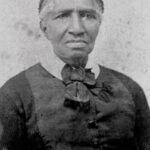
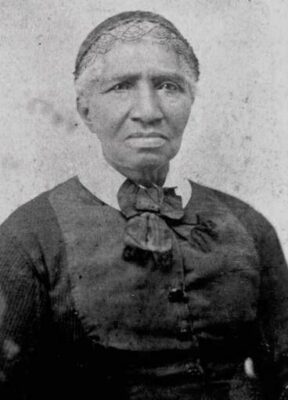
Clara Brown, Philanthropist
Women and Adversity:Clara Brown, PhilanthropistFirst African American Woman in DenverFor my blogs in May, I’m taking some of the women I featured in my ebook, Women and Adversity, Honoring 23 Notable Mothers. Most people never heard of some of them, and I think Clara Brown is one of them.
Some accounts list Clara Brown’s birth year as 1800, others 1803, but all accounts say she was born a slave in Virginia. She was about eight or nine years old when she and her mother were sold to Ambrose Smith, a tobacco farmer. Smith took them to Kentucky and included them in church services. When Clara was eighteen she married another slave named Richard. The couple had four children: Richard, Margaret and twins Paulina Ann and Eliza Jane. Paulina Ann drowned when she was eight. Smith died when Clara was 35, and her family was sold to different owners. Kentucky plantation owner George Brown bought Clara, and she worked as a house slave. When George Brown died, his will declared Clara free. She was 56 years old and vowed she would spend her life searching for her family.
She moved to St. Louis, Missouri, and heard that her daughter, Eliza Jane, had moved west. Clara decided to move west to find her. She worked as a cook and a laundress, saved her money and wanted to begin her journey, but Blacks were not allowed on stagecoaches. In 1859 Colonel Benjamin Wadsworth offered her free transportation west in the Colorado Gold Rush if she would be cook for the men on the wagon train. She accepted and spent eight weeks on the 700-mile trip, walking most of the way. Once in Denver, she searched but did not find Eliza Jane. She followed the miners to Central City, Colorado, and opened a laundry. She also worked as a cook, midwife and nursemaid. She became known as “Aunt Clara” because she never turned anyone in need away. She is known to:
Fund the construction of St. James Methodist Church in Central CityBe a founding member of the first Sunday school in existenceHave her home in Central City serve as a hospital, church, and hotelBe a nurse to those with various ailmentsBe a midwife to pregnant womenBrown invested her money in real estate and gold mines and accumulated $10,000 in savings. She used the money to help freed slaves move west and to search for her family. She began her search in Kentucky and learned that Margaret had died. She never found son Richard and never saw her husband again. Finally, in 1882 she learned that a Black woman named Eliza Jane lived in Council Bluffs, Iowa. She traveled there, and the woman was Clara’s daughter. The two moved to Denver, Colorado, where they lived together until Clara’s death.
Clara no longer had any money because she had spent all of it helping others and seeking her family. She died penniless on October 23, 1885, in Denver at the age of 85.
More information:
www.youtube.com/watch?v=ubDi4m_nmoI
ourcommunitynow.com/local-culture/our-coloradans-then-from-slavery-to-philanthropy-the-life-and-legacy-of-clara-brown
www.womenhistoryblog.com/2015/03/clara-brown.html
The post Women and Adversity: Clara Brown, Philanthropist appeared first on Jo Ann Mathews.
April 21, 2021
Women and Adversity: Living through a natural disaster, Part II


Before the tornado
Women and Adversity: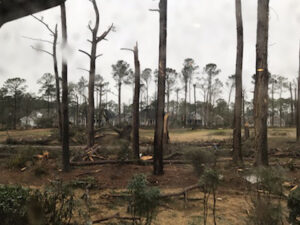
After the tornado
Living through a natural disasterPart IIThe tornado hit us two months ago, and we’re being patient about getting our house repaired. Several managers and adjusters have documented the destruction and decided what repairs are needed, but the roof shingles rest in the driveway, boards still cover broken windows and eaves and fascia hang from the cedar siding. Inside, woodwork slants away from frames while flooring and walls have gouges.
One aspect difficult to accept is looking through mud-splattered windows and seeing ruts in lawns where heavy equipment was needed to remove fallen and splintered trees. Intermittent patches of green surround trampled brown grass, and bare spots fill in where grass should be. Of the dozen azaleas we had in our backyard, only one survived, and most of the other shrubs we had were uprooted, damaged or killed.
I have talked to neighbors who had to find another place to live because their homes were condemned. Roofs were ripped from their girders, pine trees collapsed inside living rooms and bedrooms, and furniture was smashed to unrecognizable bits.
No one I talked to is saying “Why Me?” They understand that a natural disaster doesn’t only select homes whose owners have generous insurance payouts. Everyone accepts that what happened was random destruction. They are ready to collect the pieces and move on to rebuild, if not their homes, at least their lives.
We realize that we will spend most of 2021 repairing and rebuilding. We’ll have a newly refurbished, redecorated home, and we’ll be fine with that. We see new beginnings in our future.
The post Women and Adversity: Living through a natural disaster, Part II appeared first on Jo Ann Mathews.
April 7, 2021
Women and Adversity: Living through a natural disaster

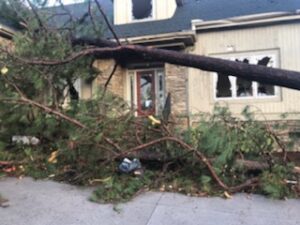
Front of our house when the tornado hit.
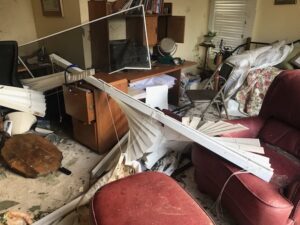
My office when the tornado hit.
Women and Adversity: Living through a natural disasterI hear the swishing of the clear plastic tarp that covers the inside space where a kitchen window should be. A plywood board covers the outside space. The titanic destruction is evident looking out from one of the mud-encrusted windows that’s not boarded up.
The EF, Enhanced Fujita, tornado that swept through Ocean Isle Beach, N.C. registered a 3 wind speed. That means the wind reached from 136-165 miles per hour and is considered “severe.” The National Weather Service said the winds were clocked at 165 mph around 11:30 p.m. the night of Feb. 15.
The primary destructions occurred at Ocean Ridge Plantation where I live. Towering pine trees no longer sway in my backyard or in my neighbors’ backyards. Instead the yard is filled with shattered glass. Shrubs are uprooted. Flower pots are overturned and broken. Most of the deck railing is gone. I found parts of it across the street and two houses down from where we live.
We see nearly all of the seventh green of the golf course and the homes across the fairway. Cobalt blue tarps are tacked on our neighbors’ roofs, and plywood covers their broken windows as well.
Mother Nature exhibits extremes. The beauty of the natural wonders such as the Grand Canyon, Niagara Falls and Denali National Park are breathtaking, but in the opposite direction is the havoc hurricanes, tornados, floods and fires bring. People have no control over natural disasters, but we can survive and become stronger for them. Steve and I didn’t suffer any physical harm, and we are lucky that we are living in our home despite the boarded-up windows, plywood floors where carpets were removed and no doors on rooms where they were ripped from their hinges.
We realize that we have more to do in life unlike the three people who died when the tornado hit. We will repair and redecorate. We’ll find our way. We’re fine.
The post Women and Adversity: Living through a natural disaster appeared first on Jo Ann Mathews.

